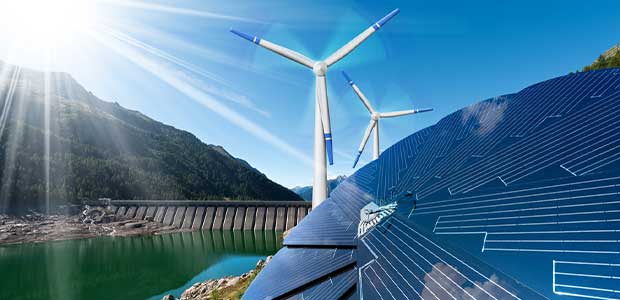
Coal Now Economically Outmatched by Renewables
Renewable energy is predicted to make $2.97 trillion by 2030.
- By Jane Marsh
- Feb 24, 2023
Coal has been the backbone of the U.S. energy grid for over a hundred years. That's starting to change in the 21st century thanks to renewable energy. It is now 99 percent more expensive to run coal plants than solar or wind energy operations.
This is due to the cost of renewable energy plummeting and the price of coal rising in the last few years. Under the Biden-Harris administration, the U.S. is making considerable strides in reducing the usage of fossil fuels and increasing the production of green power.
Solar and wind power are the most significant sources of energy in the U.S., with solar, in particular, predicted to provide 63 gigawatts more across the nation by next year. Renewable energy is also becoming more financially lucrative, forecast to make $2.97 trillion by 2030.
The Different Kinds of Renewable Energy
One of the advantages of renewables over fossil fuels is that there is much more diversity in how energy is generated. Utilizing the wind, the sun's power and the planet's heat are vastly more efficient.
Solar Energy. Solar energy is the poster face of renewable sources in the U.S. Power generated from the sun's light produces no carbon emissions. Photovoltaic panels are the most commonly used method of harvesting the sun's rays. These devices come in direct contact with sunlight, converting it into clean electricity that can be used to power anything.
Once an experimental technology, solar panels are one of the most utilized forms of renewable power worldwide. They are now widely used by homeowners and large organizations and provide an energy efficiency rating of 11 to 15 percent.
Wind Energy. Wind is just behind solar as the most well-known type of renewable energy. It’s been used for centuries—since farmers built the first windmills to make milling grain easier.
Modern-day wind turbines operate the same way as their medieval predecessors, but instead of milling grain, they generate clean electricity. Turbines generate almost 10 percent of all electricity in the U.S. Its usage is predicted to rise along with solar power.
Hydroelectric Energy. Solar and wind power are the most well-known, but hydroelectric is the most significant clean energy producer. Humans have been using hydropower for far longer than solar or wind—since the early 20th century. It generates , the most significant renewable energy source.
Hydropower generates energy using the natural flow of water. Dams are built over moving water, allowing water to travel through them and spin turbines. This kinetic energy powers a generator that translates that energy into electricity. The more water passes through the turbine, the greater the energy produced.
Geothermal Energy. Geothermal energy utilizes the Earth’s heat as an energy source. The core reaches 9,000 degrees Fahrenheit. However, you don't have to dig that deep to utilize geothermal energy. Pockets of this heat can be found and used at much shallower depths. In addition, natural formations like hot springs and volcanoes can be potential geothermal energy sources.
The use of geothermal energy has been steadily increasing. It generated 15.6 gigawatts of the world's power in 2021. The prospects seem so good that the Department of Energy under the Biden administration gave $74 million to geothermal projects.
Renewables Have the Power
The need for renewable energy is increasing as fossil fuels are slowly depleted and people look for eco-friendly options that can also save them money. Sustainable sources like solar, wind, hydroelectric and geothermal are paving the way for a green future, and things are looking bright. Coal is indeed looking like it’s going the way of the dinosaur, and its extinction may be just what the planet needs.
About the Author
Jane Marsh is an environmental writer. You can keep up with her work on her site Environment.co.